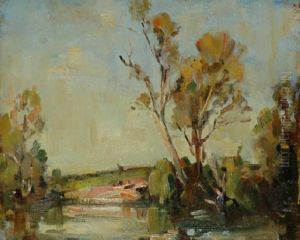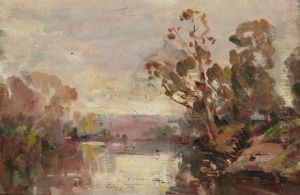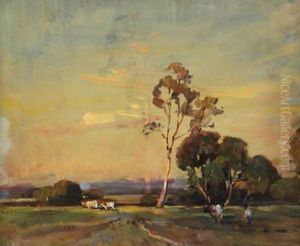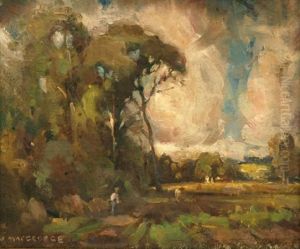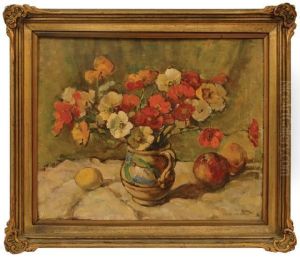Normann Macgeorge Paintings
Norman Macgeorge was an Australian artist known for his contributions to the field of painting and etching. Born on November 23, 1872, in Melbourne, Victoria, he developed an early interest in art that would evolve into a lifelong passion. Macgeorge initially pursued a career in law, after studying at the University of Melbourne, but his love for art eventually took precedence.
After his studies, Macgeorge traveled to Europe in the early 20th century to further his artistic education. This was a common practice among Australian artists of the time who sought to refine their skills and absorb the rich cultural offerings of Europe's art scene. He spent a significant amount of time in Paris and London, which were then the epicenters of the art world. During his time abroad, Macgeorge honed his skills in painting and etching, drawing inspiration from the Impressionists and Post-Impressionists. He was particularly influenced by the work of James McNeill Whistler and the French Impressionists, whose use of light and color left a lasting impression on his own style.
In 1911, Macgeorge married fellow artist Ina Gregory, and together they became an integral part of the artistic community. Their home in Ivanhoe, a suburb of Melbourne, became a hub for artists, writers, and intellectuals, fostering a vibrant cultural environment. Macgeorge was known for his landscapes and often depicted the Australian bush with a sensitivity to light and atmosphere that was reminiscent of the Impressionist movement. His etchings also gained recognition, and he was respected for his technical skill and artistic expression in this medium.
Throughout his career, Macgeorge exhibited his work in Australia and abroad, contributing to the growing appreciation of Australian art on the international stage. He was associated with several art organizations, including the Victorian Artists Society and the Australian Painter-Etchers' Society. Despite facing some criticism from conservative art circles for his European-influenced techniques, Macgeorge's work was ultimately celebrated for its unique blend of European aesthetics with Australian subjects.
Norman Macgeorge's legacy is remembered not only through his paintings and etchings but also through his influence on the Australian art community. He passed away on June 22, 1952, in Heidelberg, Victoria, leaving behind a body of work that continues to be appreciated for its contribution to the development of Australian art in the early 20th century.
